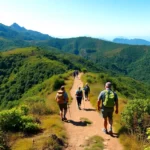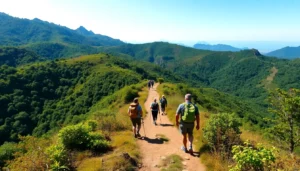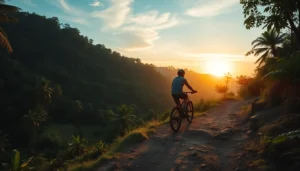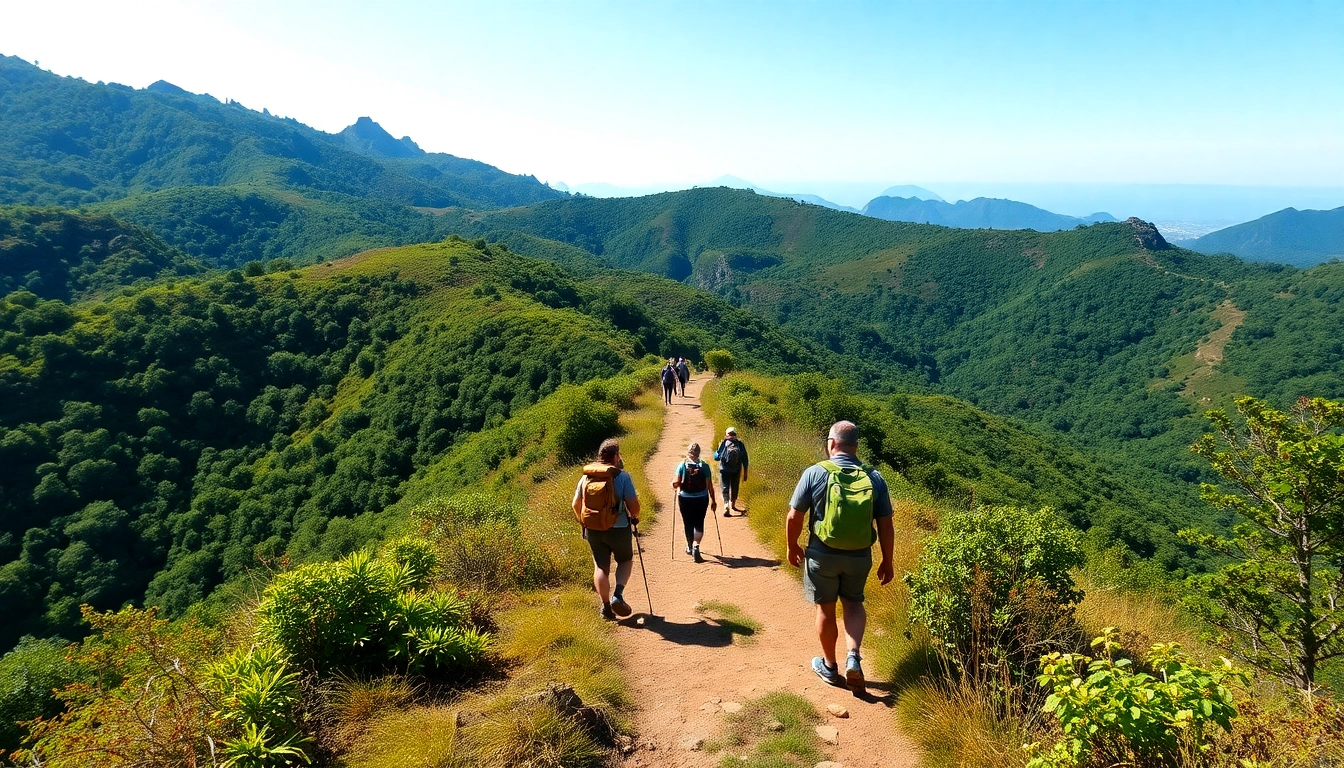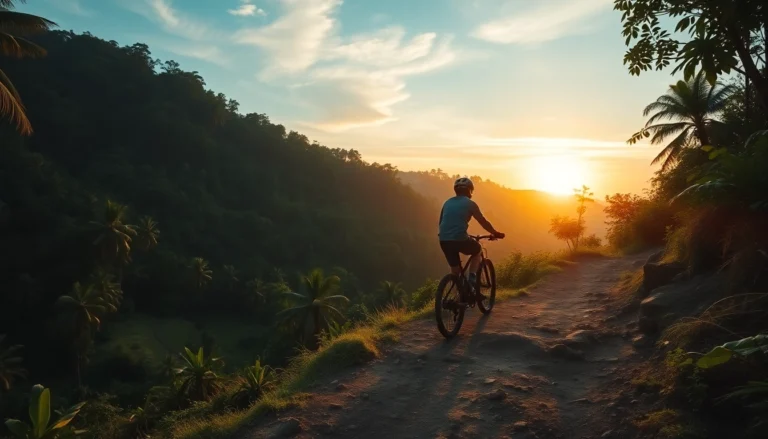Understanding Guided Hikes: What They Are and How They Benefit
Embarking on a hike can be a deeply rewarding experience, offering a chance to connect with nature, challenge oneself physically, and explore new terrains. However, for many adventurers—especially those unfamiliar with a region or seeking a more structured experience—a guided hike can transform the journey. A guided hike involves exploring a trail with the guidance of a knowledgeable expert who is familiar with the route, local conditions, and safety protocols. This professional guidance ensures not just safety and convenience but also enriches the experience through education, cultural insights, and personalized assistance.
Definition of a Guided Hike and Common Features
In essence, a guided hike is a pre-arranged trekking experience led by a skilled guide who directs the group along a designated trail. Unlike self-guided trips, where hikers navigate independently, guided hikes incorporate several key features:
- Expert Leadership: Guides possess extensive knowledge about the terrain, flora, fauna, and local history, providing educational commentary throughout the journey.
- Safety and Support: Guides are trained to handle emergencies, manage trail hazards, and ensure that all participants stay safe.
- Logistical Coordination: All arrangements—permits, transportation, meals, and accommodations—are often handled by the guiding company.
- Group Dynamic: Typically, guided hikes are organized in small groups, fostering camaraderie and personalized attention.
- Structured Schedule: The itinerary is usually planned to maximize enjoyment while allowing for rest and cultural interactions.
These features make guided hikes appealing to a wide array of travelers, from seasoned trekkers to casual explorers seeking a stress-free adventure.
Advantages of Following a Guided Hike Over Independent Trekking
Choosing a guided hike over an independent trek offers numerous benefits that directly enhance the overall experience:
1. Safety and Security
Guides are trained to handle emergencies, navigate challenging terrains, and respond swiftly in case of accidents. They are also familiar with local health risks, such as altitude sickness or dangerous wildlife, and can provide timely interventions.
2. Local Knowledge and Educational Enrichment
Guides enrich your journey with insights into local history, culture, ecosystems, and geology. For example, on a guided hike in Indonesia, guides can introduce travelers to the unique biodiversity of Lombok or Bali, explaining ecological interactions and cultural traditions.
3. Convenience and Stress Reduction
All logistical details—from permits to transportation—are managed by the tour operator, allowing you to focus solely on enjoying the trek. This is particularly valuable in remote or politically complex regions where arrangements can be daunting for independent travelers.
4. Social and Community Experience
Guided hikes foster a sense of community among participants, creating opportunities for shared stories, cultural exchange, and lasting friendships. This communal aspect can significantly enhance the emotional aspect of trekking.
5. Customized Experience and Flexibility
Good guides tailor the experience based on the group’s skills, interests, and goals. Whether you seek a challenging summit or a leisurely nature walk, guides adapt the route and pace accordingly.
6. Access to Remote or Protected Areas
Many protected regions or cultural sites require permits or arrangements that only guided tours can secure, granting access to otherwise inaccessible trails.
Studies and traveler reviews consistently highlight that guided hikes often lead to higher satisfaction, safer experiences, and a deeper understanding of the environment—making them a preferred choice for many outdoor enthusiasts.
Key Components of an Effective Guided Hiking Tour
To ensure a rewarding experience, a guided hike should encompass several essential elements:
Experienced and Certified Guides
Guides should have relevant certifications, local knowledge, and a passion for sharing their expertise. Their ability to communicate effectively and respond to diverse needs is crucial.
Comprehensive Planning and Logistics
A well-organized itinerary, including route selection, safety measures, and contingency plans, is fundamental. Proper planning minimizes risks and optimizes time on the trail.
Safety Protocols and Equipment
The best tours prioritize safety, providing appropriate gear, first aid kits, and clear instructions. They also conduct pre-hike briefings on trail hazards and emergency procedures.
Environmental and Cultural Respect
Sustainable tourism practices should underpin the tour, including instructions on minimum impact, wildlife conservation, and respectful interactions with local communities.
Educational and Cultural Components
Incorporating storytelling, local history, and cultural traditions enhances the experience, providing deeper insights beyond just physical activity.
Customer Feedback and Continuous Improvement
Reputable operators actively seek feedback to refine their offerings, ensure safety, and enhance participant satisfaction.
Choosing the Right Guided Hike for Your Skill Level and Interests
Guided Hikes Suitable for Beginners, Families, and Adventure Seekers
Guided hikes come in various difficulty levels tailored to different interests and abilities. For beginners or families with children, gentle nature walks through lush landscapes with minimal elevation gain and accessible paths are ideal. These tours focus on discovery, wildlife spotting, and cultural interactions, making the experience welcoming and educational.
More experienced hikers and adventure seekers might opt for challenging multi-day treks, higher altitudes, or remote wilderness routes that test endurance and technical skills. Guides for such expeditions are equipped to handle complex terrain, overnight camping, and safety in isolated environments.
Popular Guided Hike Destinations in Indonesia and Globally
Indonesia, with its rich biodiversity and diverse landscapes, offers exceptional guided hiking opportunities. Regions like Lombok, Bali, and Komodo Island feature guided treks that showcase pristine beaches, volcanic peaks, and vibrant ecosystems.
Globally, renowned destinations include the Alps, the Andes, New Zealand’s Milford Track, and the Himalayas. Each offers distinct natural beauty, cultural richness, and unique challenges suited to different skill levels.
How to Select a Reputable Guide or Tour Operator
When choosing a guided hike provider, consider several factors:
- Credentials and Certifications: Look for guides certified by relevant local or international organizations.
- Reviews and Recommendations: Read traveler testimonials on platforms like TripAdvisor or specialized outdoor forums.
- Safety Standards: Ensure the operator follows established safety protocols and carries appropriate insurance.
- Environmental and Cultural Policies: Opt for companies committed to sustainability and respectful community engagement.
- Range of Offerings: Choose operators with diverse options suitable for your interests and skill level.
Thorough research and personal consultation can significantly enhance satisfaction and safety.
Planning Your Guided Hike: Tips and Best Practices
What to Pack and Prepare for a Guided Hiking Tour
Preparation is vital for a successful hike. Essential items typically include:
- Appropriate Footwear: Durable hiking boots aligned with the terrain.
- Clothing Layers: Moisture-wicking base layers, insulating mid-layers, and weatherproof outer shells.
- Navigation Tools: Map, compass, or GPS device, even if the route is guided.
- Safety Gear: First aid kit, headlamp or flashlight, whistle, and sun protection.
- Personal Items: Water bottles or hydration systems, snacks, personal identification, and any necessary medications.
Consult your guide beforehand to confirm packing requirements tailored to specific conditions and activities.
Understanding Safety Protocols and Trail Regulations
Every guided tour emphasizes safety. Familiarize yourself with protocols such as staying within designated trails, respecting wildlife, and adhering to group instructions. Always communicate any health issues or concerns to your guide prior to the hike.
Maximizing Your Experience: Tips for Engagement and Respect for Nature
Active participation and respectful behavior enrich your experience:
- Ask questions and engage with your guide to learn more about the environment.
- Practice Leave No Trace principles: avoid littering, stay on trails, and minimize disturbance.
- Be mindful of your impact on flora and fauna—observe without disturbing wildlife.
- Pause to appreciate scenic viewpoints, listen to natural sounds, and take photographs responsibly.
Enhancing Your Guided Hike Experience with Local Guides and Culture
Learning About Local Flora, Fauna, and Traditions from Guides
Local guides are treasure troves of knowledge, providing insights into the plants, animals, and ecological systems along the trail. For example, in Lombok, guides might highlight endemic orchids, medicinal herbs, or bird species unique to the region. Their stories often incorporate folklore, history, and traditional uses, adding depth and context to the hike.
Integrating Cultural Visits and Authentic Encounters into Your Hike
Many guided tours in Indonesia include stops at indigenous villages or cultural sites, offering travelers authentic interactions with local communities. Participating in traditional ceremonies, sampling local cuisine, or learning craft techniques can greatly enrich the hike’s cultural dimension.
Supporting Sustainable Tourism and Local Economies through Guided Hikes
By choosing locally operated guided hikes, travelers directly contribute to community development, conservation efforts, and preservation of cultural heritage. Ethical operators emphasize responsible tourism, ensuring minimal environmental impact and fair economic practices that benefit local residents.
Measuring Success: Feedback and Performance Metrics for Guided Hikes
Gathering Traveler Reviews and Satisfaction Scores
Post-trip feedback is essential to assess the quality of the guided hike. Collecting reviews helps identify strengths and areas for improvement, ensuring continuous enhancement of services.
Tracking Safety, Environmental Impact, and Trail Conservation
Monitoring incidents, environmental disturbances, and trail wear provides data to improve safety protocols and conservation practices. Many operators implement strict guidelines to mitigate tourism’s footprint.
Continuous Improvement Through Customer Feedback and Innovations
Incorporating feedback into program updates, adopting new eco-friendly practices, and integrating innovative technologies (like mobile apps for real-time updates) keep guided hikes relevant, safe, and sustainable.
Overall, success in guided hiking is measured not only by participant satisfaction but also by positive environmental and cultural impacts, creating a sustainable model for future adventures.
